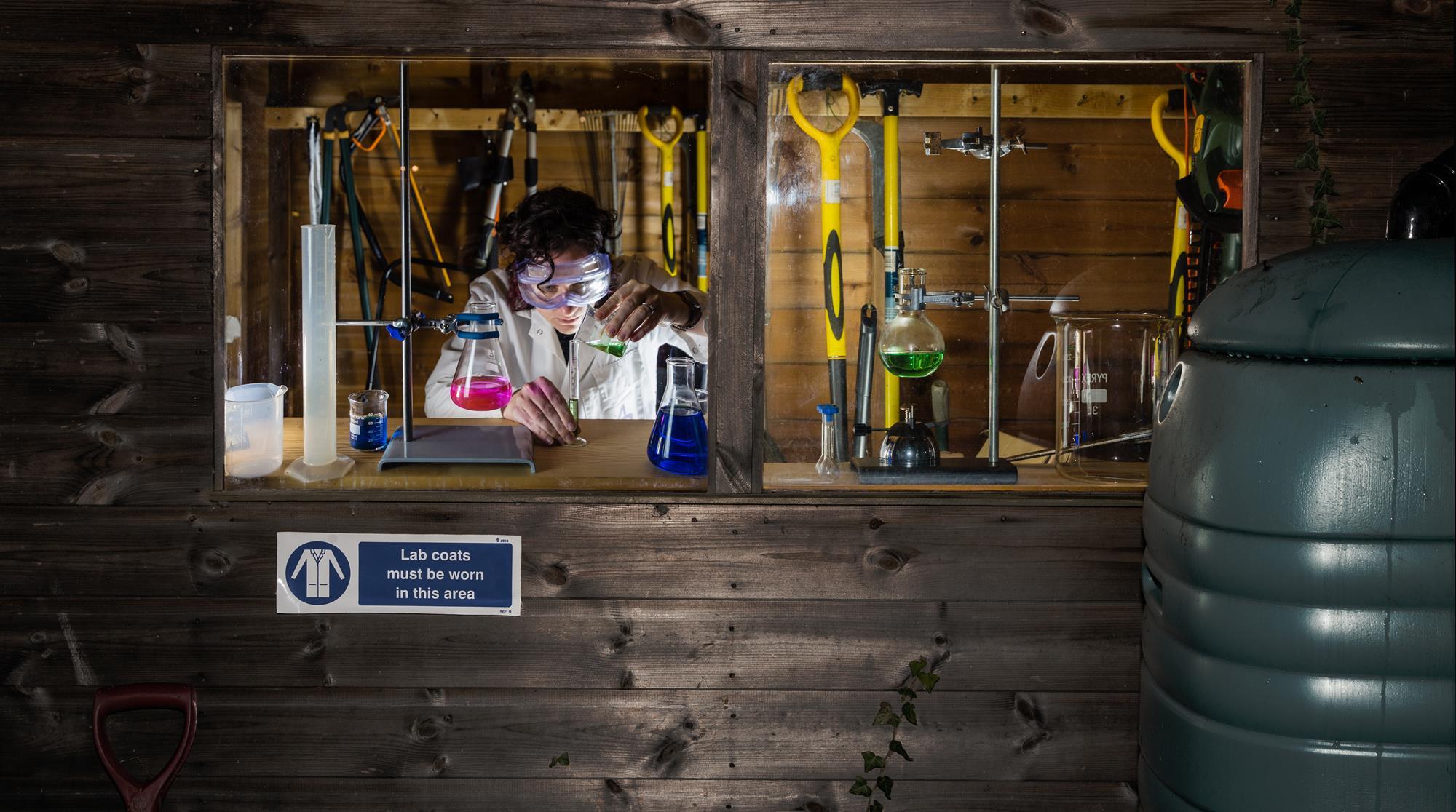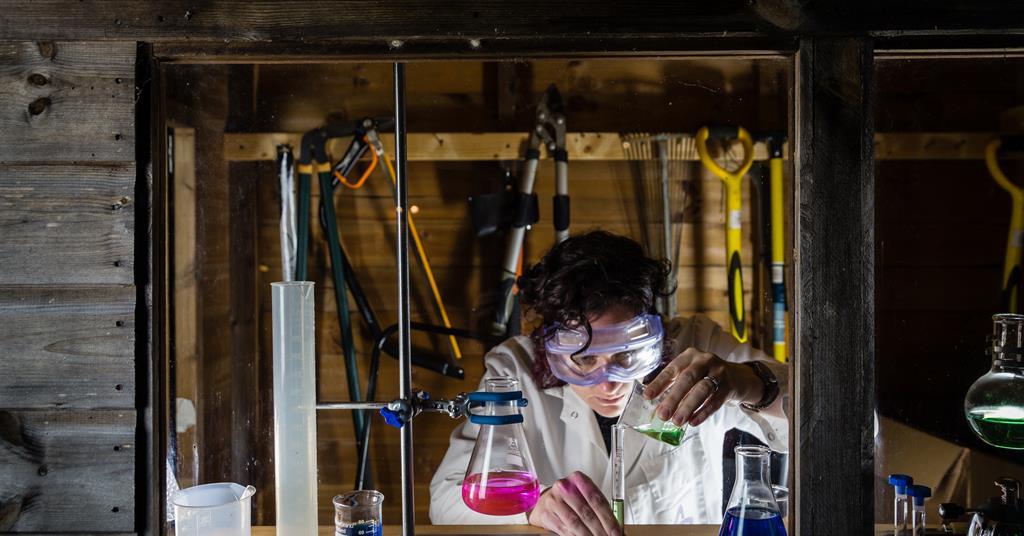How Should Students Prepare to Use Chemicals in the Lab
Lab personnel should label all containers containing chemicals or compounds made in the lab with. Become familiar with the chemicals to be used including exposure or.

Chemical Laboratory Equipment Shapes And Usage Laboratory Equipment Chemistry Lab Equipment Lab Equipment
Make an appropriate system for waste disposal.

. Do not store flammable liquids in open containers. Make sure everyone working in the lab reads and understands the procedures. Describe the possible routes of exposure for a hazardous material.
These chemicals include explosives carcinogens mutagens teratogens etc. Separate all chemicals especially liquids according to compatible groups. How should students prepare to use chemicals in the lab.
Where in the laboratory should waste chemicals be disposed of properly. Add your answer and earn points. Ae instructed to smell a chemical in the lab you need to.
Pour water into acid. Laboratory personnel who insist on working at the edge of the laboratory chemical hood raise the sash above its maximum operating height defeat alarms disable sash closures do not move an elephant trunk close to the source block baffles use loose materials in the chemical hood and clog the ductwork leave the sash open when not working at the chemical hood fail to report. After normal business hours call 911 on the Seattle Campus.
Ring the chemical close to you. For significant chemical handling it will be necessary to supplement lab coat use with additional protective clothing for example a rubber or vinyl apron for handling large quantities of corrosives or hydrofluoric acid or it may be preferable to use. Use appropriate resistant secondary containers for corrosive materials.
Make sure all chemicals and reagents are labeled. A fan the air above the chemical toward your nose. UW Police Department will put you in contact with after-hours EHS staff.
Supply room personnel should record the receipt of all purchased chemicals. Select one or more. Purchase new labels to keep careful record of your chemicals and their wastes.
Reduce or eliminate open flames and spark producing equipment. Select one or more Locate the soll its and understand tow they are used 0 Check labels and dead chemicals that are not 100 por Sorte lub chemicals in alphabetical order for colok accett. State the general rules for working safely in a chemical laboratory environment.
When diluting an acid with water always remember to. If the chemicals in your lab require specific instructions not listed in the Emergency Guide establish standard operating procedures for special conditions in your facility. Keep or purchase extra glass bottles with tight-fitting lids for solvent disposal.
Store flammables and corrosives chemicals separately in suitable cabinets. Know the storage handling and. Locate the spill kits and understand how they are used.
Basic Laboratory Safety 10. Among the data that should be recorded are the supplier the amount of chemical purchased its purity its amount the person ordering the chemical and the laboratory room number to which it. Assemble a spill kit tailored to clean up small spills of chemicals commonly used in your lab.
Ce to win the chemicals to be used in our order and Partially correct co. Tir and shake the chemical well d add water before you smell it. ðStudents are trained in the environmental impact of chemicals.
EHS is available to consult on chemical spills and emergencies 24 hours a day seven days a week. The following guidelines are reviewed during orientation for all new graduate student teaching assistants but should also be read by any other individuals who may be called upon to give laboratory instruction to undergraduates. Locate the spill kits and understand how they are used.
How should students prepare to use chemicals in the lab. Become familiar with the chemicals to be used including exposure or spill hazards. Primary safety responsibilities of.
Loose clothing should be secured so they do not get caught in a flame or chemicals. Use chemicals and reaction systems in a ventilated enclosure such as a fume hood. Work quietly know what you are doing by reading the assigned experiment before you start to work.
Check labels and discard chemicals that are not 100 pure. Teaching a laboratory class poses additional risk as compared to conventional instruction in a classroom. Follow all precautions regarding storage of incompatible materials.
Along with your chemicals be sure to order new bottles for lab use. Call the Chemical Spill Line at 2065430467 from 800 am. If needed to educate students.
Ensure chemicals not in use are stored in a locked facility with limited access. Do not taste or smell chemicals. Wear sensible clothing including footwear.
To allow the odor to come out. Unnecessary or outdated chemicals. Question 13 St Partial edition 50100 How should students prepare to use chemicals in the lab.
The chemicals full names 5. Use a refrigeratorfreezer rated to store flammable materials. Something that is often forgotten is labels.
Explain why food and drinks are not permitted in a chemical laboratory. Do not store chemicals on the lab bench on the floor or in the laboratory chemical hood. Sort the lab chemicals in alphabetical order for quick access.
Add both at the same time 6. Pay close attention to any cautions described in the laboratory exercises. Post a chemical compatibility chart for reference both in the lab and next to chemical storage rooms.
You should prepare in advance for the lab by reading and understanding the assigned experiment to avoid accidents due to lack of comprehension of the procedure techniques or equipment involved in the experiment and be familiar with all safety precautions. 1 See answer Advertisement Advertisement pepe7622 is waiting for your help. R nose and inhale deeply.
Identify and describe the use of basic PPE. How should students prepare to use chemicals in the lab. Pour acid into water.
Become familiar with the chemicals to be used including exposure or spill hazards. The best way to do this is by maintaining an inventory of all the chemicals in use or stored in your laboratory. Wear fire-resistant lab coats or aprons when appropriate.
Chemical shelving should be wooden with a front lip and ventilated. Keep water gas and electricity turned off when not in use. Getting Ready for The Chemistry Lab 1.
O Chemicals classified as extremely or very hazardous by the GHS H azard Class 1 or HC1 or could be used as illegal drug precursors should not be stored used by nor available to high school students.

A Guide To Chemical Hazard Labels By Compound Interest Chemical Hazard Symbols Hazard Symbol Lab Safety Poster

Hobby Chemists Feature Chemistry World

Safety Symbols Science Safety Lab Safety Science Lab Safety

8 Steps To Handling A Laboratory Chemical Spill Westlab
The Importance Of Safety In The Lab Elitechgroup In Vitro Diagnostic Equipment Reagents

List Of Important And Basic Laboratory Equipment S Chemistry Lab Equipment Science Tools Science Equipment

Lab Safety Rules You Should Know Infographics Science Lab Safety Learning Science Teaching Chemistry

Young Woman Scientist Working In Chemical Laboratory And Examining Biochemistry Lab Sample Science Technology Medicine Rese Women Scientists Chemist Scientist

Lab Safety Doodle Notes Doodle Notes Lab Safety Chemistry Lessons

Laboratory Hazards And Risks Lab Manager

Chemistry Lab Bundle 15 Must Do Labs Teaching Chemistry Chemistry Education Chemistry Labs

Pin On Animal Friendly And Or Eco Friendly

Chemistry Laboratory Safety Rules Lab Manager

General Awareness Tips For Chemical Safety Chemical Safety Safety Courses Health And Safety

Hobby Chemists Feature Chemistry World

Infographic Lab Safety Rules Science Lab Safety Lab Safety Rules Medical Laboratory Science

Chemistry Lab Safety Poster Dealing With The Safe Handling Of Chemicals One Of A Series Originally De Science Safety Posters Chemical Safety Lab Safety Poster


Comments
Post a Comment